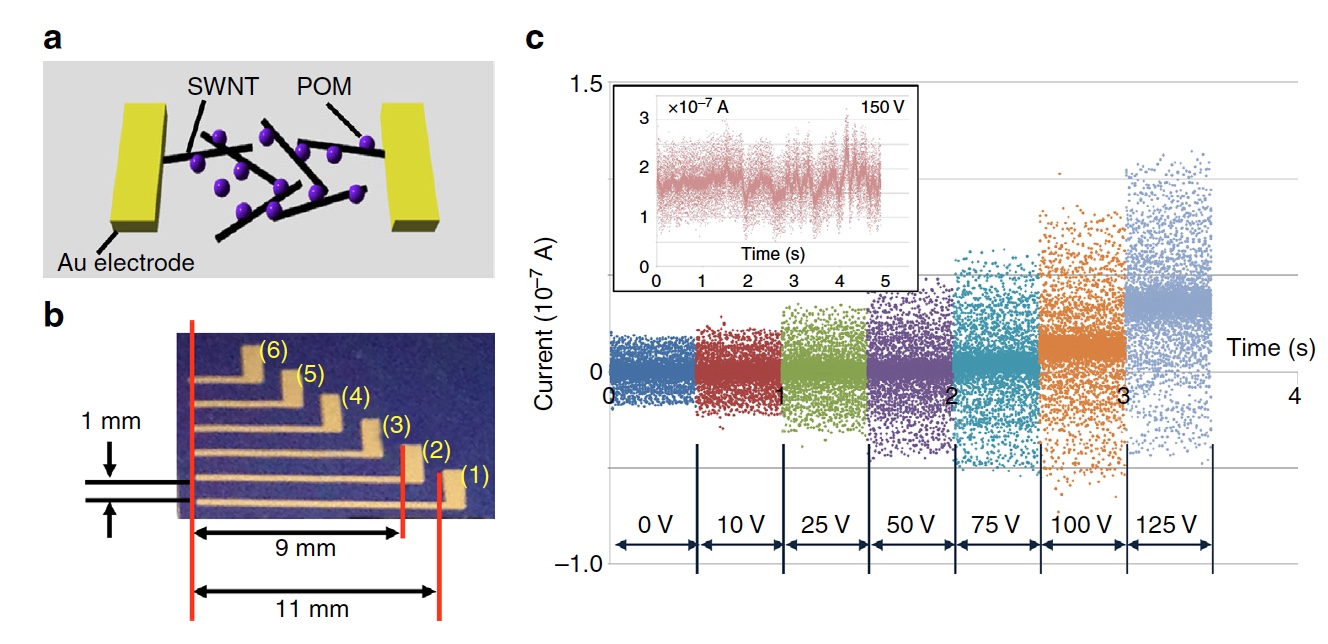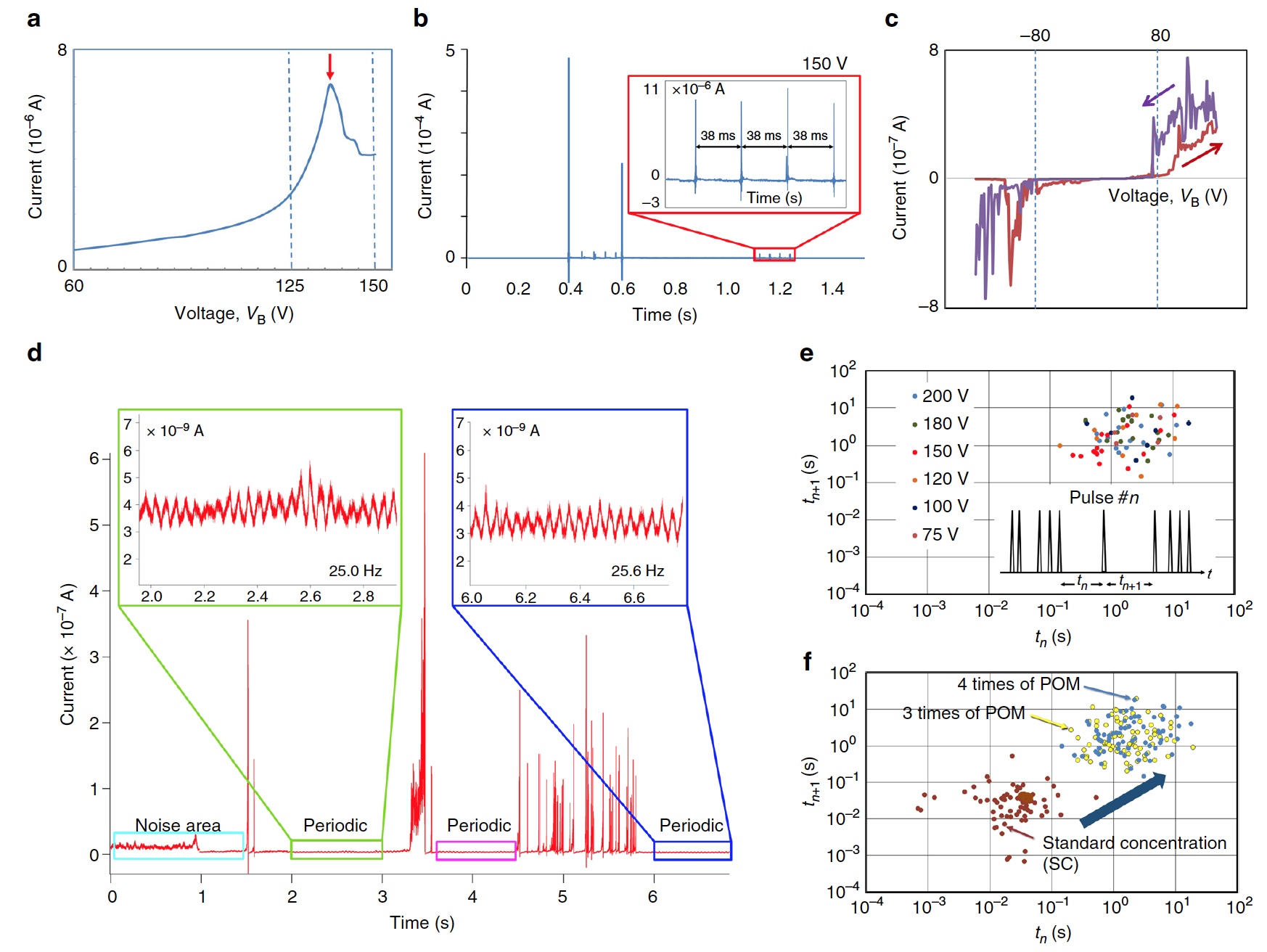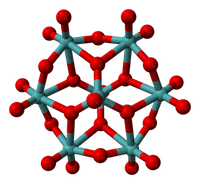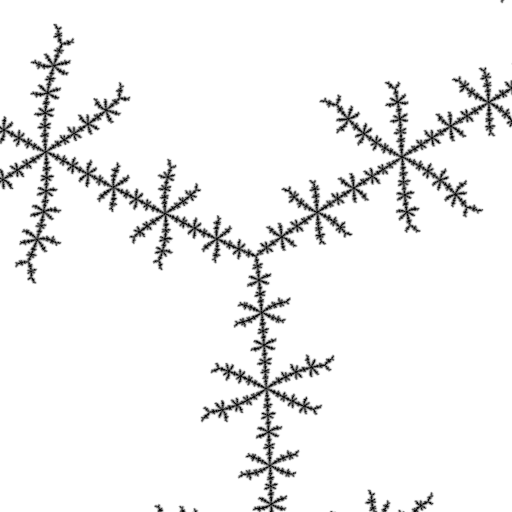Artificial brain recipe: nanotubes, polyoxometallate and a pinch of electrons

The world is tight, the human brain is immenseVery short, but incredibly accurate thought. The human brain and to this day remains a mystery to scientists. Yes, we have long known what and how it works, which site is responsible for what actions. However, this is only the basics of neuroscience. To say that the brain is understandable to us as twice two is to be greatly mistaken. And how, without having understood with own brain, to try to create artificial? Is this stupidity or ambition? And this is not about the glands collected to the heap, which send electrical impulses to the right place, thereby imitating the human brain. It's about a full-fledged artificial brain. Attempts to create something similar are not rare in the world of science. In the world of science in general it is difficult to find something that no one else has done. Today we will get acquainted with studies aimed at the realization of a molecular neuromorphic network device, which consists of single-walled carbon nanotubes in conjunction with polyoxometallate. It sounds extremely difficult, but damn interesting. Go.
(Friedrich Schiller).
The basis of the study
Not all types of computing work on the same principle. As a result, each type is better suited for certain tasks. Computers that mimic the work of the human brain are of interest to researchers because they are able to effectively perform low-power calculations, which are harder to cope with classical systems.
The science behind many variations of AI (artificial intelligence) are computer science and engineering. However, this study is based on neuroscience, which combines several areas of study of neural connections, neural processes and brain function.
In order to realize the concept of “artificial brain”, it is necessary to learn how to create artificial impulse neurons that would imitate the appearance of nerve impulses (further peaks), as well as the creation of complex and dense networks of these peaks.
The coding of neural information using peaks is an extremely important element for performing transmission operations on neural membranes (active transmission lines) within noisy and unreliable media.
Fully understand the practical application of technology, which has not yet been fully studied, is still difficult, as the researchers say. However, excellent results are already visible on the use of large impulse neural networks for performing blind signal separation * , reservoir calculations * , etc.
Blind signal separation * —separates a set of source signals from mixed signals without using source information.
Reservoir computations * - the architecture of a pulsed neural network, which consists of a recurrent reservoir and output neurons.At the moment, neuromorphic systems are much inferior to the abilities of the human brain, since they consist mainly of devices based on CMOS * . CMOS * is a complementary metal-oxide-semiconductor structure. In turn, the scientists decided to change this established tradition by demonstrating a molecular neuromorphic network device consisting of a network of single-walled carbon nanotubes in combination with polyoxometallate * , which in this case is a substitute for classic silicon.

Single-layer (SWNT) and multi-layer carbon nanotubes (MWNT)
Polyoxometalat * (POM) is a polyatomic ion, usually an anion, which consists of three or more transition metal oxyanions joined together by common oxygen atoms to form closed three-dimensional frameworks.To create an analog neuromorphic "machine", two extremely important types of devices are needed: synaptic devices and neural membranes.
The synaptic device is located at the intersection of axon * and dendritic * wires of neural devices and acts as a membrane junction, the force of which is maintained.
Axon * is a process of the nervous cell of the organism, through which impulse is transmitted from the cell to the organs and other cells.
Dendrite * is a branched process of the nerve cell that receives information from the axons of other nerve cells.

The structure of the neuron (nerve cell)
This synoptic device consists of a network of carbon nanotubes, mentioned earlier.
A neuron-membrane device, which is an artificial equivalent of a neuron, produces impulses (peaks) and transmits them through axon and dendritic connections to other devices of the same nature.
The use of single-walled nanotubes is due to the fact that metallic conductors based on carbon nanotubes generate large electrical noise with rich dynamics. In addition, single-layer nanotubes have different conductivity, depending on the adsorption of molecules.
Adsorption * is a spontaneous process of increasing the concentration of a solute at the interface of two phases.The basis of the entire experimental device was a substance from the category of polyoxometalates — phosphate dodeco molybdic acid ( H 3 PMo 12 O 40 ; then simply PMo 12 ), which demonstrates reversible many-electron redox properties * , electronic versatility and negative differential resistance on highly oriented pyrolytic graphite * .
The redox properties * - the transfer of electrons from one atom to another. The giving atom is oxidized, and the receiving is restored.
Negative differential resistance * (NDR) - type of resistance, if during the passage of current through an electrical circuit, it increases, and the voltage decreases.
Highly oriented pyrolytic graphite * - in this study is the substrate. It has good conductivity and reflection.Having collected all of the above, we get a device based on single-layer carbon nanotubes and polyoxometallate, consisting of a dense and complex network of PMo 12 molecules that simulates a pulsed neural network.
For clarity, the results of experiments and their comparison with preliminary calculations, the researchers propose to consider an abstract two-dimensional model of molecular compounds.
Experimental results

Image No. 1
In image 1a, we see a snapshot of an atomic force microscope (AFM), which shows the structure of a single-walled nanotube in combination with a polyoxometallate on a silicon substrate. The diameter of the elements of the structure does not exceed several nanometers, and the total thickness of the structure is 10 nm.
Graph 1b shows the measured current and voltage characteristics. Since the sweep voltage of the atomic-force microscope controller was fixed and extremely transient, the measurements were carried out exclusively as a preliminary check.
We can observe several peaks on the graph, indicating that the current did not increase smoothly, since the bias voltage increased due to the characteristics of the negative differential resistance of the device under study.

Image # 2
Image 2a is the intended network structure. Yellow cuboids are end electrodes, black tubes are SWNT, and purple dots are POM particles.
2b is a micrograph of a fabricated SWNT / POM network device, which has several end electrodes (1-6 in the image) with different distances between the electrodes.
The study involved two samples:
A - treated with ethanol;
B - treated with distilled water.
Graphs on the image 2c is a current change in sample A with stepwise increasing the bias voltage from 0 V to 125 V.

The image №3
Figure 3a shows the current-voltage characteristic * Sample A in the gap between the electrodes 1 and 2. Here we see a peak NDR (red arrow) between 125 and 150 V offset voltage. These data were collected in air at room temperature with an average value of power line cycles of 100 and 60 Hz power lines.
Volt-ampere characteristic * - dependence of the current of the electrical circuit on its voltage.When the bias voltage was increased to 150 V, the current became unstable. In this case, non-Gaussian distributions arose, leading to the generation of a periodic / aperiodic current. If the voltage is set significantly higher than 150 V, then the whole system becomes unstable. In graph 3b, this is clearly seen due to the arising electrical impulses. Their periodicity is visible on the additional chart (highlighted with a red frame).
The current-voltage characteristic of sample B in the gap between electrodes 1 and 2 is shown in Figure 3c.. If the bias voltage is more than 80 V, then the occurrence of hysteresis, showing the characteristics of the NDR and current instability. If the voltage was below 80 V, then the fatal instability was not observed due to the accelerated transfer of ions in the sample, which was treated with distilled water (sample B ). This effect was not in sample A , since it was treated with ethanol.
Graph 3d shows the current at a bias voltage = 80 V. There are signs of periodic / aperiodic current oscillations (about 25 Hz) and random electrical impulses.
Next, we show the Poincaré graphs, where we can see the difference between the applied bias voltage ( 3e) and the ratio of the concentration of polyoxometallate particles to nanotubes ( 3f ).
The inset in graph 3e shows a short sequence of pulses as an example, where t n is the n-n inter-peak interval. This indicator was the basis for the creation of the Poincaré graph. Each point corresponds to its inter-peak interval (t n , t n +1), which allows to visually distinguish chaos from randomness.
Let's look at the chart 3e again . All points that are interspecific intervals at different bias voltages do not show the properties of self-similar objects *. This suggests that the sequence of generated pulses was completely random.
Self-similarity * - when part of an object is partially or completely identical to the object itself:It is worth noting that chance and chaos are completely different things. In fact, the word "chaos" in mathematics or physics does not carry the same meaning that we used to understand at the household level. For example, in mathematics, chaos is when the system is determined, that is, the results of this system are strictly dependent on the factors acting on it. It turns out that chaos is not a disorder, but a certain type of orderliness of the system, if it is greatly exaggerated.
Phosphate dodecomolybdic acid (H 3 PMo 12 O 40 )
Chemical analysis of a substance with a difficult to pronounce name showed that PMo 12 can “store” up to 24 electrons, which of course leads to certain changes in the structure of the molecule.
It should be noted that the conductivity of a single molecular compound varies depending on the electronic and structural state, and this leads to electrical noise in the region of the compound.
This problem was solved by researchers demonstrated by other scientists. If we apply the method of switching conductivity by oxidation and reduction * on molecules, then the ratio of low to strong conductivity of electric current will exceed 1000, even at a bias voltage less than 1 V.
Reduction * - reduction from oxide (antipode of oxidation).This observation was used in the creation of the model, which is the subject of this study. The conductivity between polyoxometallate molecules and nanotubes changes from weak to strong when the number of electrons in PMo 12 molecules exceeds their maximum number.
As a consequence, in order for a molecule to hold several electrons, the conductivity of the intermolecular compound must be low. For if there are too many charges in it, there will be an impressive potential difference across the entire connection, which will lead to a transition from low to high conductivity.
When the electrons absorbed by the molecule are discharged through a highly conductive compound, they transfer to the next molecule with the highest potential. If, however, this molecule is also "stuffed up" with electrons, then a chain reaction occurs throughout the entire network of the system. Similar chain reactions occur in the human body. Touch the cold surface with your finger, tactile receptors will receive information about the cold and pass it through your neural network into your brain. Simply put, this information will go from the tip of your finger to your "personal computer" in your head, and all this at a speed of up to 120 m / s.
Epilogue
This study demonstrated that the use of specific substances in conjunction with nanostructures can, under certain circumstances, demonstrate the imitation of the nervous system of a living organism. A well-chosen selection of such components, based on their chemical, electrically conductive, molecular properties, will allow the creation of a system capable of transferring electrons from one element to another due to the oversaturation of H 3 PMo 12 O 40 molecules . "Bridges" between which are single-layer carbon nanotubes.
We will not build cloudy castles and let us say frankly that the system described above is extremely unstable and has not been brought to mind yet. However, this is a big step towards the creation of a new (albeit described in many previous studies and even in science fiction literature) type of computing technology. Such machines will not be able to replace classic computers, at least not soon, but will be used to work on certain specific tasks. Or maybe a neuromorphic computer will become the benchmark of computing technology and will rightfully bear the title of "artificial intelligence." Time will tell. For the time being, we will continue to follow similar studies, each time being surprised by more and more non-standard methods for implementing such a concept.
I strongly recommend that you familiarize yourself with the report of the scientists, which describes in detail the methods of measurement, as well as the cellular automaton of the studied model of the neuromorphic network.
Thank you for staying with us. Do you like our articles? Want to see more interesting materials? Support us by placing an order or recommending to friends, 30% discount for Habr's users on a unique analogue of the entry-level servers that we invented for you: The whole truth about VPS (KVM) E5-2650 v4 (6 Cores) 10GB DDR4 240GB SSD 1Gbps from $ 20 or how to share the server? (Options are available with RAID1 and RAID10, up to 24 cores and up to 40GB DDR4).
Dell R730xd 2 times cheaper? Only we have 2 x Intel Dodeca-Core Xeon E5-2650v4 128GB DDR4 6x480GB SSD 1Gbps 100 TV from $ 249in the Netherlands and the USA! Read about How to build an infrastructure building. class c using servers Dell R730xd E5-2650 v4 worth 9000 euros for a penny?


